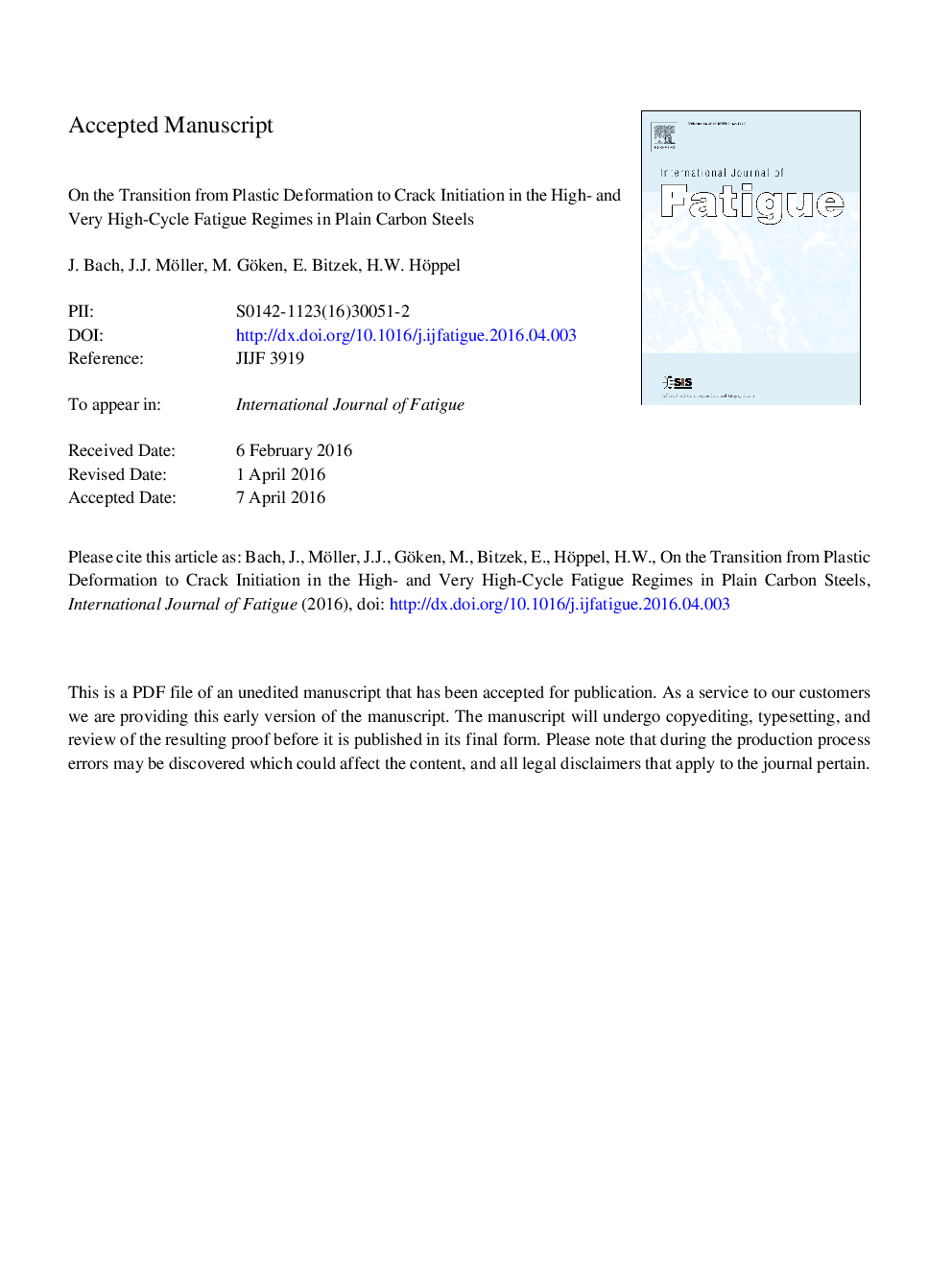| کد مقاله | کد نشریه | سال انتشار | مقاله انگلیسی | نسخه تمام متن |
|---|---|---|---|---|
| 5015302 | 1463733 | 2016 | 28 صفحه PDF | دانلود رایگان |
عنوان انگلیسی مقاله ISI
On the transition from plastic deformation to crack initiation in the high- and very high-cycle fatigue regimes in plain carbon steels
ترجمه فارسی عنوان
در انتقال از تغییر شکل پلاستیک به شروع ترک در رژیم های خستگی بالا و بسیار چرخه در فولادهای کربن ساده
دانلود مقاله + سفارش ترجمه
دانلود مقاله ISI انگلیسی
رایگان برای ایرانیان
کلمات کلیدی
موضوعات مرتبط
مهندسی و علوم پایه
سایر رشته های مهندسی
مهندسی مکانیک
چکیده انگلیسی
It is well known that fatigue life of metallic materials involves processes at different stages. Two main regimes can be distinguished: The first is governed by plastic deformation and related dislocation processes like cyclic saturation and strain localization. The second regime is mainly dominated by crack initiation and propagation. Whether an infinite fatigue life is obtained or not is therefore ultimately determined by the complex interplay of plastic deformation processes, the formation of small crack nuclei and their subsequent interaction with the surrounding material's microstructure. Thus, it is necessary to investigate the transition from plastic deformation to crack initiation in the high- and very high-cycle fatigue regime in more detail. Three plain carbon steels with different ferrite to pearlite ratios were investigated in order to determine the influence of different microstructures on the transition from cyclic deformation to crack initiation in the high and very high cycle fatigue (VHCF) regime. A new method was developed where the changes in the dissipated energy are used to account for irreversible plastic deformation during ultrasonic fatigue loading. At very small fatigue amplitudes, which still lead to VHCF-failure, the cyclic deformation regime covers the main part of the fatigue life. In this regime dislocation interactions lead to the accumulation of irreversible plastic deformation followed by small crack nuclei that initiate at phase or grain boundaries (GBs), marking the transition to the damage regime. In order to better understand the fundamental mechanisms at the transition between both regimes, idealized atomistic simulations were performed. To model fatigue-induced plastic deformation various defects, i.e. dislocations and vacancies, were placed in the vicinity of a GB. These defects generally decrease the globally applied critical stress for crack initiation whilst the local critical stress stays mainly unchanged in the same range as the theoretical GB strength. Based on the experimental results and on the general findings from the atomistic simulations it is concluded that an infinite fatigue life is obtained either when cyclic irreversible deformation is too small to build up the necessary stresses for crack initiation or when the formed crack nuclei cannot overcome the next microstructural barriers.
ناشر
Database: Elsevier - ScienceDirect (ساینس دایرکت)
Journal: International Journal of Fatigue - Volume 93, Part 2, December 2016, Pages 281-291
Journal: International Journal of Fatigue - Volume 93, Part 2, December 2016, Pages 281-291
نویسندگان
J. Bach, J.J. Möller, M. Göken, E. Bitzek, H.W. Höppel,
